
|
Consorting
Newsletter of the Consortium of Vermont Composers
This edition of Consorting is sponsored by...
Consorting
February 1997 -- Volume VIII, Number 1Rev. 9 April 97

|

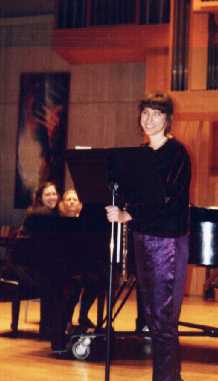 Flutist Karen Kevra finishes performing music by Gilles Yves Bonneau at the Burlington concert of the FourScore Festival of New Music by Vermont Composers.
Flutist Karen Kevra finishes performing music by Gilles Yves Bonneau at the Burlington concert of the FourScore Festival of New Music by Vermont Composers.
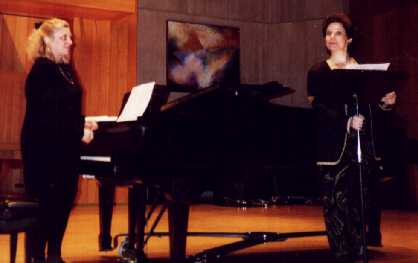 Lisa Jablow and Paula Ennis Dwyer. Lisa mugs for the audience after performing a series of art songs by Vermont composers.
Lisa Jablow and Paula Ennis Dwyer. Lisa mugs for the audience after performing a series of art songs by Vermont composers.
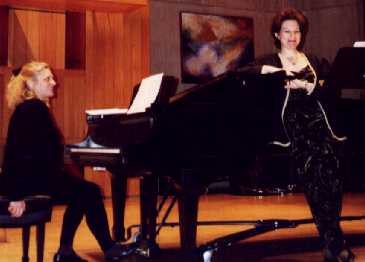
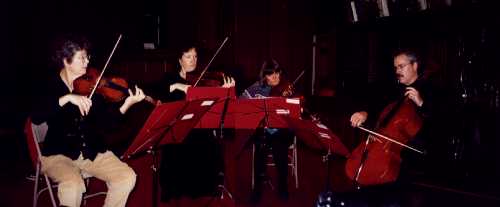 The Bella Rosa String Quartet performs in southern Vermont in this composite photo.
The Bella Rosa String Quartet performs in southern Vermont in this composite photo.
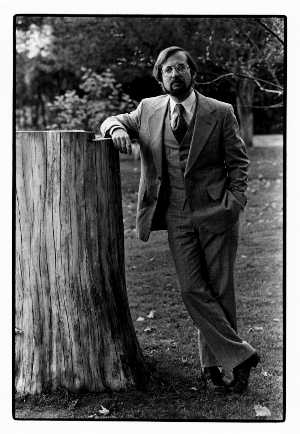
Happy New Year, everybody. Much else is new: David Fuqua is our new editor of Consorting (thanks, David!), relieving Dennis Báthory-Kitsz after many extra innings (thanks, Dennis!). Larry Read has stepped down as Director, having agreed to take the role for a year during which he led us ably (thanks, Larry!) thus catapulting me into the position of Acting Director, even though I've never been much good at acting or directing.
Not everything was wonderful, of course: too few submissions of scores in several categories led to imbalances in programming, with some composers overrepresented and others neglected (partly from time constraints, partly the result of performers' choices); there was a limited range of musical styles, with a dearth of "cutting edge" material for instrumental and vocal forces; a couple of programs went way over acceptable length; a couple were poorly attended; some composers whose works were being presented didn't show up. We did well; next time, though, we'll do better.
It's astonishing to recall what our plucky little organization (with a total annual budget that wouldn't keep most arts groups in coffee and doughnuts) has accomplished during its brief few years. We've had large festivals in Burlington, Putney, Montpelier, Middlebury, and Woodstock, as well as the peripatetic FourScore. We've brought together scores of Vermont composers, and their scores. (Just a little levity, there. Sorry.) We've midwifed hundreds of performances of new and recent works, introducing them into the repertory of dozens of fine singers and players. We've established relationships with such important presenters as the ones named above, as well as the Vermont Symphony Orchestra, the Vermont Contemporary Music Ensemble, the Craftsbury Chamber Players, Sara Doncaster's ambitious Warebrook Festival, WVPR, and many others. We've cultivated new audiences, new venues, new commissions. We've increased Vermonters' awareness of the the wealth of creative musical talent in their own neiqhborhoods. We've assembled an aviary of birds who don't ordinarily Ģock together: composers amateur, professional, and academic; traditionalists and iconoclasts; purveyors of electronic music, performance art, keyboard improvisation, singing-songwriting in contemporary idiom-as well as the usual bleary-eyed strict-notationists (like me) in European/American modernist mode.
 Mark Nelsonís new CD "Aboriginal Voices", produced by Good Vibrations/RJR Digital in Bonita, California, will be available in mid-October or so for $15.00 plus $2.00 shipping which includes Spiritual Alloys for Tuba and Vibraphone by Erik Nielsen, Brillenbass for Tuba, Celeste, and Cymbals by Thomas Read and Three Furies for Solo Tuba by former Vermont composer James Grant. "Come out and support your fellow Vermont Composers," says Mark. The ordering info is:
Mark Nelsonís new CD "Aboriginal Voices", produced by Good Vibrations/RJR Digital in Bonita, California, will be available in mid-October or so for $15.00 plus $2.00 shipping which includes Spiritual Alloys for Tuba and Vibraphone by Erik Nielsen, Brillenbass for Tuba, Celeste, and Cymbals by Thomas Read and Three Furies for Solo Tuba by former Vermont composer James Grant. "Come out and support your fellow Vermont Composers," says Mark. The ordering info is:
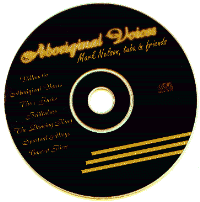
An interesting note: ASCAP (of which some of us are members) just paid three years' dues : '95, '96, and '97. I am obligated to report that ASCAP also suggests that CVC purchase a license to cover the concerts we gave/will give. (In our continued interest, all presentors of concerts should be licensed.) I have not purchased this license, and have suggested to ASCAP that they first license several other concert presentors in Vermont; I gave them a list. But I should also say that our efforts have several good supporters at ASCAP.
As an incorporated tax-exempt entity, CVC is obligated to file a IRS report, and I am doing so. I continue to work on our IRS recognition as a 501c3 organization. Newt made this harder, I fear. The report of last year's activities will get to the Vermont Community Foundation this week, I hope.
Please do speak up if you know of any funding possiblities. I will do the follow-up if appropriate.
Respectfully,
Don Stewart
February 1. Please send material to: David Fuqua, email to highland@sover.net
Robert Black
1800 Albany Ave.
Hartford, CT 06105
tel: (860) 523-1820
fax: (860) 232-5214
email: hogriver@aol.com
![]() Go to top
Go to top
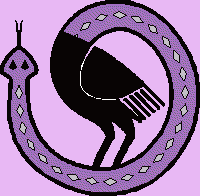 The Pauline Oliveros Foundation is pleased to announce the Seventh Annual Deep Listening Retreat with Composer Pauline Oliveros and T'ai Chi, Taoist and Creative Movement specialist Heloise Gold at the Rose Mountain Retreat Center in the Sangre de Christo Mountains of New Mexico July 13-18, 1997. The Second Annual Advanced Deep Listening Retreat follows from July 20-25. The advanced retreat is for those who have completed at least one Deep Listening Retreat at Rose Mountain.
The Pauline Oliveros Foundation is pleased to announce the Seventh Annual Deep Listening Retreat with Composer Pauline Oliveros and T'ai Chi, Taoist and Creative Movement specialist Heloise Gold at the Rose Mountain Retreat Center in the Sangre de Christo Mountains of New Mexico July 13-18, 1997. The Second Annual Advanced Deep Listening Retreat follows from July 20-25. The advanced retreat is for those who have completed at least one Deep Listening Retreat at Rose Mountain.The first week-long training is designed to awaken creativity and a sense of well being through the meditative exploration of listening and sounding, and to learn flexibility in as many forms of listening as possible. Listening and sounding is complemented by gentle creative movement and exercises. Participants may also begin the three year Deep Listening Certificate program to qualify for teaching. Two more advanced retreats and two year long home study projects based on the retreat work are required for the certificate.
Deep Listening Retreat participants are not required to be musicians. The exercises are designed to facilitate challenge for each individual at her own level of understanding and creative experience. This Retreat is for anyone interested in expanding and deepening respect and appreciation of an inner music and the possibilities for expressing it: musicians and artists interested in expanding their understanding of sound; meditators interested in enhancing their depth of practice through listening; teachers who want to encourage appreciation for listening in their students; and those interested in well being, relaxation, excitement and connection with others and the environment.
Rose Mountain Retreat Center is situated 8,000 ft. up in the pristine Sangre de Christo Mountains of New Mexico. Camping is encouraged, with optional space available for indoor accommodations and participants are provided with healthful, vegetarian meals. The beauty and tranquillity of the center rests on its isolation, simplicity and low-impact relationship with the environment. Far removed from the sounds of urban life, Rose Mountain provides a rich quiet for deep listening.
The Pauline Oliveros Foundation, Inc., is a non-profit organization based in Kingston, NY. 1997 marks its twelveth year as an organization committed to the support of the creation and dissemination of new work in music, literature and performance. locally, nationally and internationally.
For more information, please contact the Pauline Oliveros Foundation, Inc., at (914) 338-5984, Fax (914) 338-5986 or E-mail: deeplisten@aol.com or sandee8103@aol.com Address: PO Box 1956 Kingston NY 12401
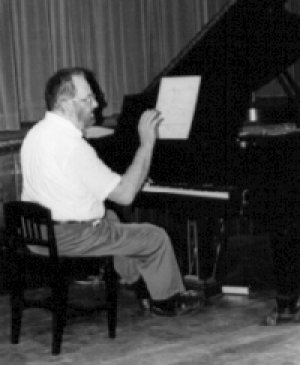 A quick look at Schenker's Five Graphic Music Analyses with introduction by Felix Salzer (Dover reprint 1969 from the 1933 edition from the Mannes College of Music) shows a brilliant visual way of approaching music. Not only does a passage have a natural and intuitive beginning and End, as every teacher inculcates, but there are inner sections which fold out, and within each are smaller coherences, down to slurs and even ties. Understanding the building blocks of a passage, from minor phrases to the overall contour is essential for sensitive interpretation, and Schenker has laid out a method of visual patterning to show both the macro and micro structure at one glance. Actually it takes a lot of glances, but if you look carefully it is all in there.
A quick look at Schenker's Five Graphic Music Analyses with introduction by Felix Salzer (Dover reprint 1969 from the 1933 edition from the Mannes College of Music) shows a brilliant visual way of approaching music. Not only does a passage have a natural and intuitive beginning and End, as every teacher inculcates, but there are inner sections which fold out, and within each are smaller coherences, down to slurs and even ties. Understanding the building blocks of a passage, from minor phrases to the overall contour is essential for sensitive interpretation, and Schenker has laid out a method of visual patterning to show both the macro and micro structure at one glance. Actually it takes a lot of glances, but if you look carefully it is all in there.
This was especially interesting to me because for years I was doing a very similar poetry graphing for literature students, with events contoured on a ten foot long roll of 12-inch paper in colored lines, the vertical axis representing strength of effect and the horizontal axis representing time. When more than a handful of the "contour lines" congregated about a given point, we always found there a special focus of intensity, a poetic node. The students made their own graphs, which opened their eyes to what was going into good poetry, but my colleagues passed the wall where our streams of graphs were posted with a sneer and never had a notion of what we were doing. So with Schenker, with a novel and complex approach of this kind one can easily be set off miss the point.
Reading the detailed commentaries in Salzer's Structural Hearing (2 vols. 1952, Dover 1962), one comes to the conclusions that:
Starting with a general music base rather than a harmonic predisposition, I state:
Summary: Certain basic features must exist. There must be tones and optionally spaces. There must be more than one tone, thus series or voice or melody-line, which will have some sort of rhythm, stretching from perfectly even to incomprehensibly variable. Register will exist as a variant of pitch, since mono-tone music is invariably monotonous. Right after this we will want to specify the kind of sound, that is instrumentation and orchestration.
Now we come to the critical area. Salzer's harmonic spectrum has at its core a small cluster of tone-relationships, the beatless octave, relatively pure fifth and fourth, rich and buzzy third/sixth, while the rest fall in the class of the so-called dissonances of various sorts. Triadic at heart, this layout is beautiful, and has served the West well for centuries, but after the turn of this century, it was felt to be restrictive in a culture where everything else from Einsteinian relativity to Cubism was going through radical change.
Look for a moment at the intervals of the scales we use in the West. The octave was known from antiquity for its peculiar quality of beatlessness, in Just Intonation fifth and fourth shared this quality, adjusting by ear for ensemble playing. In the 14th Century, the Church finally permitted use of thirds and sixths, which had been outlawed because of their disturbing, high beat rate. With the development of equal temperament for piano and organ, small amounts of beat were introduced for fourths and fifths, slightly enriching these intervals (at the cost of the old purity). By the 17th Century, thirds/sixths with their fast and exciting beat rates, were established as central to music which became triadic by rule. An open octave or open fifth/fourth were not to be used without a major/minor third inserted, and we became used to this as The Sound of Music. On the one side of this musical spectrum stood, aloof and unused, the pure octaves, just fifth and fourth. The mid-range of triadic combinations was now basic, to be pointed-up here and there with seconds in a triadic display, or for momentary passing effect. On the other end of our spectrum stood the dissonances, the major and minor seconds, the tritone, timbral clashes, and arpeggios of fourths as a sort of scale replacement -- all used most cautiously in the last century, but coming to the fore with this century's New Music, with its anti-triadic obsessions.
Two tone harmonies, simultaneous or sequential, can range from pure and beatless in their charming emptiness, through the rich, chocolatey, piled-up thirds and sixths, on to the world of dissonance which can be sly and intuitive, dynamic and shocking, or as novel to our ears as a melodic run of parallel tritones. Register and timbre from many instruments complexify this greatly, so it is no longer a question of what series of Schoenbergian notes we use, but a matter of how wide our spectrum of pitch, register, instrumental timbre, and neo-harmonic beating-richness can be. Add to this the tone-slides of the violin, trombone or synth., and the quarter tones of Indian music, and we have more than enough for New Music in New Directions.
But form remains. There is still beginning and end, even if they don't sound like it any more. There are still scale series, and chordal effects even if they come from voices bumping each other in time. And there are micro-relationships all over the page of score which build into musical paragraphs, and finally define the total musical display, as in Schenker's overall, condensed Ur-linie. Schenker said, you do not compose to this Ur-linie, rather it is the analytical statement of what an intuitive musician with Improvising Mind (it is his word here, not mine) fits together with craft as his work.
Turn to Schenker's graphical display (Five Graphic Music Analyses, ed Salzer., 1933, Dover reprint 1969) with its wonderful sense of inner structure and overall form. Here we can see the analysis of where the voices come from and where they are leading to, and what inner relationships they have, but in a specialized way. Things were seen by Schenker as forever referring to a triadic display or listed as dissonant, that is, outside the harmonic series (the minor second, the tritone, distant parallel fifths). But they now can all be taken as the tones of Conscious Design and Intent. Scales built on fourths, or pentatonically, or a Lydian sequence are open for our use. Nor do we have to end a piece with a dominant-to-tonic resolution, or even a tonic-like finale. We can flirt with tonic for a while, then end on the seventh, effectively. Tones four octaves apart have strikingly different timbral properties.
We have to rethink the whole gamut of available beat-relationships, which become available as we leave the tempered piano and organ for wind instruments, string and synth. These Neo-harmonic relationships become the basis for a new kind of analysis, but one which we can still insert within the framework of a Schenkerian visual and graphical display. There is a reason for use of graphic display, as Salzer notes: There are relationships which the ear hears well, but the eye understands quite differently, and in some ways more coherently.
I am not thinking of abandoning Salzer's harmonic analysis. It would be the worst kind of snobbery to think that Modern Music must construct its melodic-notions, as often happens, out of continual minor seconds and augmented fourths. To outlaw a major triad from new music, would be like rejecting the reds and yellows from a painter's palette. By expanding our notion of sound, we can use, with relish, the traditional harmonic world , and at the same time work with sound-relationships which Classical composers could not have imagined or heard.
Would such mixed music, spanning in its tone-relationships from Gregorian through developed Diatonic and on to the options we have at hand, sound odd and idiosyncratic? It is to be hoped so, because the Greek word idio-syncratic means literally a private-mixture, a personal way of putting things together. In a highly social world where everyone, including many a composer, is busy trying to look like everyone else, having a Private Mixture in mind is perhaps the most important thing one can do in so vital a discipline as the art of music.
To receive the source material
Interesting place to visit: Take in the essays found at the Music Unbound site. This is a provocative locale.
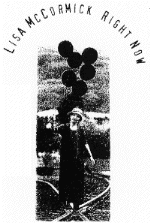 Lisa McCormick has released her new CD, Right Now, available from Rising Records, P.O. Box 327, Princeton, Massachusetts 01541, 1-800-798-8989. Lisa's upcoming concerts: October 27, Northampton, Massachusetts, at the Iron Horse, 7pm, with Jonathan Edwards. November 24 in White River Junction, Vermont, at the Briggs Opera House, 5 pm, with Jonathan Edwards. For other appearances, contact Lisa at RD #1, Box 182, Putney, Vermont 05346.
Lisa McCormick has released her new CD, Right Now, available from Rising Records, P.O. Box 327, Princeton, Massachusetts 01541, 1-800-798-8989. Lisa's upcoming concerts: October 27, Northampton, Massachusetts, at the Iron Horse, 7pm, with Jonathan Edwards. November 24 in White River Junction, Vermont, at the Briggs Opera House, 5 pm, with Jonathan Edwards. For other appearances, contact Lisa at RD #1, Box 182, Putney, Vermont 05346.
Vermont composers were consistently featured in the show's first year, with more than 30 interviews, but have been sparse in 1997; only Craig Bove has joined us from Vermont this year (a really wonderful interview), as well as the students of Su Lian Tan and Evan Bennett in a remarkable live performance (see below). Vermont composers are very much encouraged to contact the producers, Dennis Báthory-Kitsz (802-485-3972; 176 Cox Brook Road, Northfield, Vermont 05663) and David Gunn (802-244-1747; 7 Huntington Place, Waterbury, Vermont 05676). Composer interviews and music run 60 to 80 minutes on each program.
Since the last Consorting, K&D show guests have included electroacoustician Marc Battier and Kitchen co-founder Rhys Chatham (Paris), artificial intelligence expert Peter Beyls (Brussels), sustained-music creator Maria de Alvear and composer/theorist Klarenz Barlow (Cologne), orchestral addict Benedict Mason (Amsterdam), eclectic chamber composer Richard St. Clair (Boston), and post-minimalist Michael Torke (New York).
Michael Torke was recorded in his apartment in New York City. New York visits also included groundbreaking electroacoustician David Behrman, opera composer Daron Hagon (who will be at the upcoming Middlebury vocal music festival), creator of computer-generated rock music Nick Didkovsky (Dr. Nerve, coming to Dartmouth April 5), eclecticist Jeff Harrington, electroacoustician/improviser Tom Hamilton, performance artist Peter Van Riper, chamber composer and quasi-pop performer Eve Beglarian, computer composer Chris Koenigsberg, and eclecticist Joseph Celli.
A special presentation on K&D's February 15 show was Gimpel the Fool, an opera by students of Su Lian Tan of Middlebury. The opera, complete with 16 instrumentalists and chorus of 20, was performed live in the Bazaar's performance studio at WGDR. With the cooperation of station manager and engineer Stu Bautz, the two-hour performance was broadcast in beautiful, clear sound. Tapes of this performance (and other K&D shows) are available.
A tour to Toronto was also made, where K&D were joined by a wide range of creative expression represented by Ann Southam, Allison Cameron, Gary Barwin, Martin Arnold, Christos Hatzis, Sarah Peebles, Stephen Parkinson, Bill Gilliam, Elma Miller, James Tenney, John Oswald, Linda Catlin Smith, and Udo Kasemets.
Three European interviews were done in March: Arthur Sauer, Richard Tolenaar and Johan van Kreij. Alas, we weren't able to conduct our planned interviews with Frederic Rzewski, Tom Johnson, Georg Hajdu, and Karlheinz Essl, but will re-schedule them as soon as we can.
A very special On-line mentoring program was done in collaboration with The WebProject, including composers Anne La Berge in Amsterdam, Richard Tolenaar in Amersfoort, Rhys Chatham and Eliane Radigue in Paris, and Laurie Spiegel, Tom Hamilton and Nick Didkovsky in New York. For more information, check out the European Composers Mentoring Project Again, Vermont composers are encouraged to join the K&D show, whose schedule is open beginning in May. The composer-hosts can also be reached by email: Dennis (Contact Form) or David (wheezle@maltedmedia.com).
Keep in touch with the Bazaar at its new, easy-to-remember URL, http://www.maltedmedia.com/kalvos/.
| Consortium Membership, October 1996 | ||
|---|---|---|
| Michael Arnowitt-Reid |
Olexandra Beck |
Michael Billingsley |
| Gilles Yves Bonneau |
Sarah Brock |
Gene Childers |
| Constitution Brass Quintet |
Paul Dedell |
Sara Doncaster |
| Kathy Eddy |
George W. Emlen |
David Gibson |
| Larry Grover |
David Gunn |
William Harris |
| Zeke Hecker |
Bruce Hobson |
Donald Jamison |
| Rip Keller |
Ed Knight |
David Krauss |
| Kenneth P. Langer |
Wayne Lauder |
John Levin |
| Laddie Lushin |
Orra Maussade |
Lisa McCormick |
| Don McLean |
Gregory J. Mertl |
George Milne |
| Dennis Murphy |
Bob Nuner |
Lucius Parshall |
| Beth Phinney |
Vita & Louis Pisciotta |
William D. Prue |
| T L Read |
Jessica Roemischer |
Charlie E. Schneeweis |
| Alan Shawn |
Marga Richter Skelly |
Sonatina Enterprises |
| David Robert Stewart |
Ernest Stires |
Gary T. Vick |
| Gwyneth Walker |
Batya Weinbaum |
Robert Wigness |
Board: David Fuqua, David Gunn, Craig Hanson, Bill Harris, Zeke Hecker, Lisa Jablow, Dennis Báthory-Kitsz, Maria Lattimore, Ed Lawrence, Peggy Madden, Don McLean, Erik Nielsen, Bea Phillips, Thomas L. Read, Don Stewart, Gwyneth Walker, Batya Weinbaum.